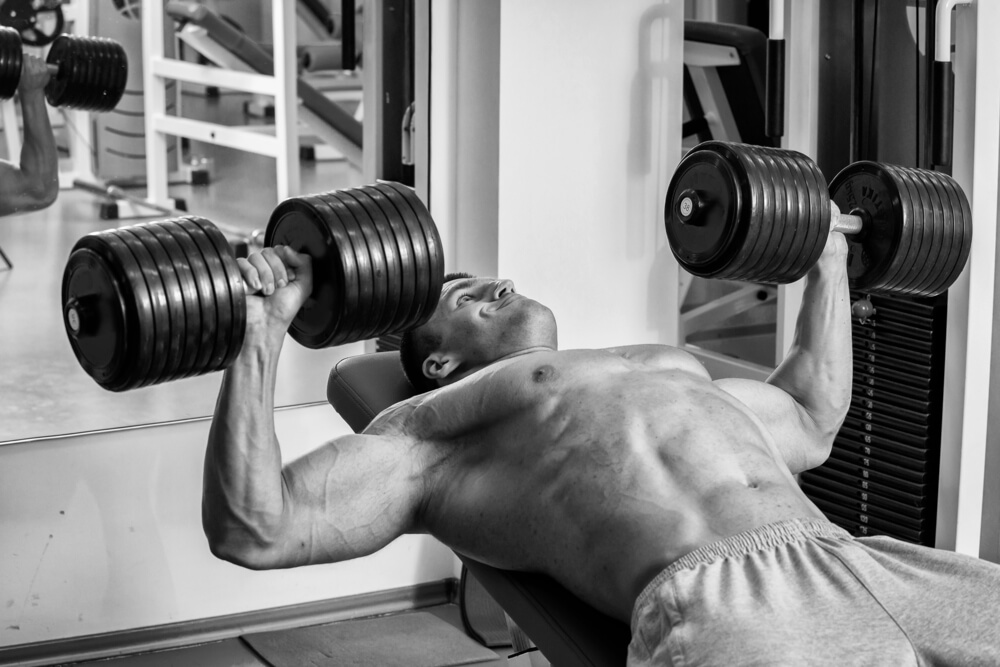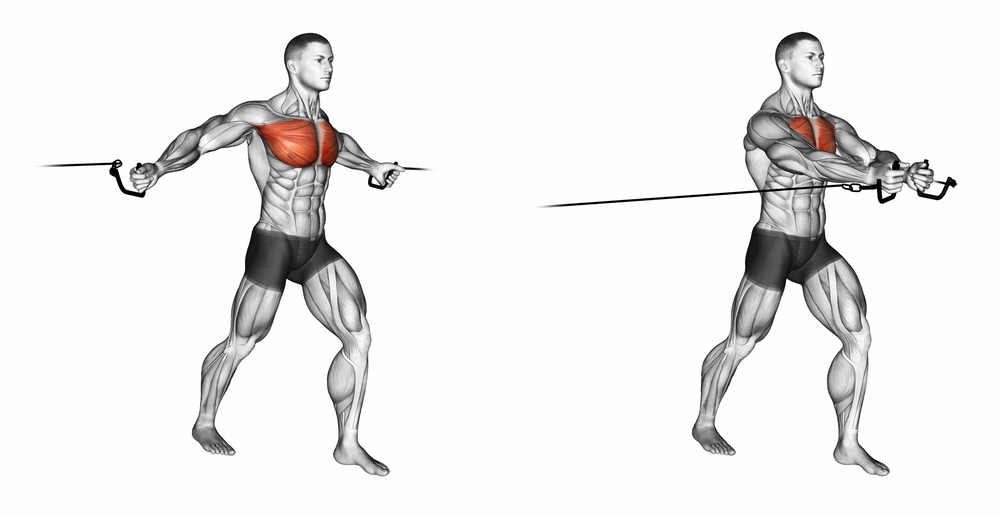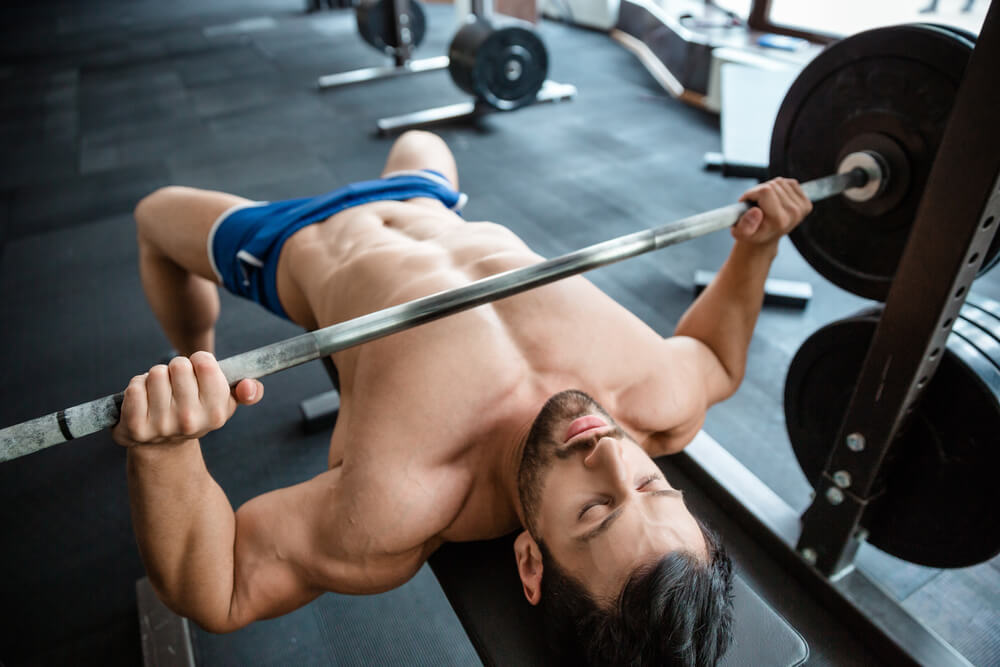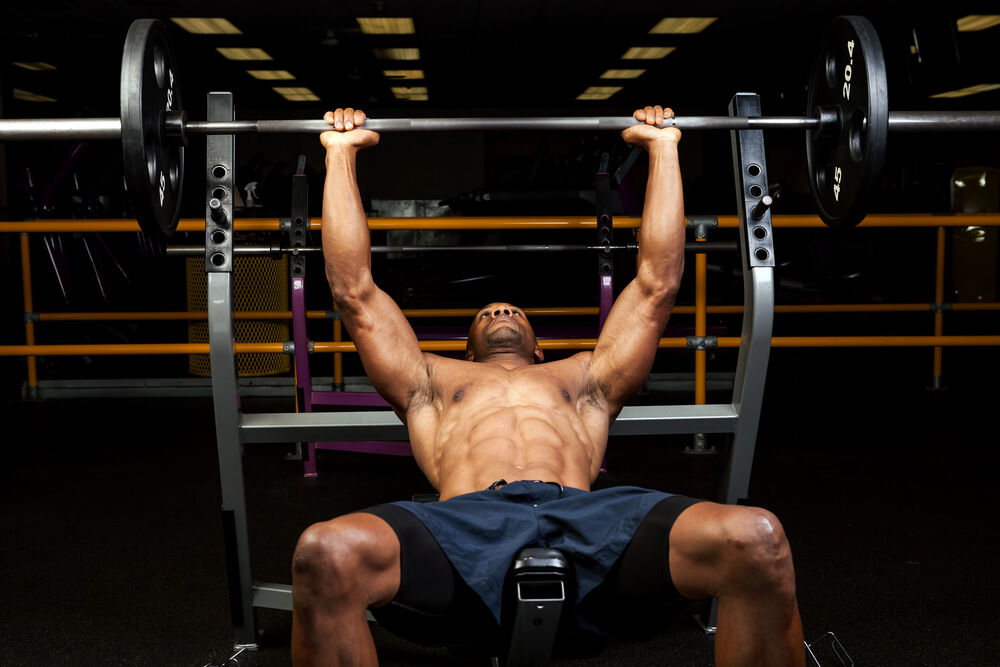
There’s nothing like a strong, powerful chest. It instantly makes you look larger and stronger. It also helps you look thinner, as a larger chest prevents stomachs from protruding. Beyond the physical appearance of a strong chest though you’ll also see a substantial improvement in the rest of your upper body lifts including any pectoral exercises.
.
Your chest aids in everything from shoulder and back work to forearms and biceps. Just about everything you do is, at the very least, aided with your chest. If you’re looking to increase the size of your pectoral muscles you don’t need to bring on a dozen different lifts.
In fact, you just need to target the individual parts of your pectoral muscles. This way, you’ll both grow your chest and target some of the often forgotten areas of the chest, giving you a fully defined, strong upper body that everyone, especially yourself, will love.

Pectoral Muscles
While it might feel like it, your chest muscle is not a single muscle group. There are actually several different muscles built into your chest. Knowing the different muscles found within your pecs will help you target each when lifting.
First, there is the pectoralis major.
This is the largest portion of your chest. It is the center portion of the chest, connecting the middle of the breastbone and running horizontally to your armpit. Depending on the body fat percentage, you can flex your chest and look in the mirror. You’ll see slight indentations along the top of your chest but under the collarbone. This is where the pectoralis major ends.
The sliver of muscle tissue above the pectoralis major (and where that indentation is when you flex) is where the pectoral fascia begins. This is a sliver muscle that connects up to your collarbone. On the bottom of the pectoralis major is the pectoralis minor. This is a thin, triangular muscle that is where your pectoral muscles connect with the rib cage.
These are the three major muscles groups found within your pecs.
However, if you’re focusing on the chest, there are a few other minor muscles here.
You don’t need to specifically target these muscles as you’ll hit them with the major lifts you’ll be doing, but it does help to know what’s going on under your skin. This includes the serratus anterior. The serratus anterior is a small portion of muscles that is found above your obliques, running between the first and 8th ribs. If you feel your pectoral muscles and then run your hand over to your side, directly below your armpit, this is the serratus anterior.
There is also the subclavius muscle.
This muscle is a very small sliver of a muscle that is directly above your pectoral fascia. So you will hit this very small muscle when you target the pectoral fascia. It is a slender strip that runs from the breastbone, along with the top of the rib cage, to where your armpit is. It is worth pointing this muscle out because if you have ever broken your clavicle (or know someone who has), it might have been avoided if a stronger subclavius muscle existed.
One of the lifts we’ll be focusing on here will help strengthen this sliver of a muscle. You won’t see any of the strength or size improvements (unless your body fat is sub-five percent), but it is important for avoiding injuries (Inner Body, 2018).
Best Pectoral Exercises

Standard Bench Press
The bench press is by far the best lift you can do to target your pectoral muscles. Yes, you can flip over onto your chest and pump out pushups, but in terms of improving both your size and your strength, nothing can replace the bench press.
First, let’s look at performing the bench press.
Right away ditch any kind of machine. If you use a machine you might be able to put up more weight, but it is critical to work your stabilizing muscles here, because your stabilizers are the other parts of your pectoral muscles, including the minor muscles. By using a machine you’ll shortchange yourself.
Ideally, you’ll have a barbell setup you can use. If you don’t, dumbbells are beneficial as you can target each side differently and avoid one side compensating for the weaker side, but when it comes to bigger weight, always go for the barbell whenever possible (we’ll get into switching up the lift styles to increase muscle confusion and continue strength and size gains a bit later. When you do this and you focus on applying more tension on your lifts, feel free to switch to dumbbells for added confusion. In terms of sheer weight though, always go with the barbells).
Next, before we begin lifting, it’s important to consider your hand placement on the barbell.
You need to use a wide grip approach. The wider your grip the more you target your chest. A slender grip puts more of the weight on your biceps and triceps. As your goal is not building stronger arms but a stronger chest, push your arms further out.
The traditional bench press will focus on the pectoral major. You’ll touch on some of the secondary pectoral muscles, but this is the kind of chest exercises for a reason. Now, when lifting, you’ll need to decide if you’re goal is to increase strength or size. If you want to increase size you need to focus on lifting between eight and 12 reps per set (with three to five sets.
Ideally more if you really want to whip your muscles, but if you’re running short on time at the gym do at least three.
Thankfully, you don’t need to do a ton of chest lifts to fully whip it into shape). If you’re going for strength, focus on around four to six reps per set (again three to five sets).
It is of critical importance to not just stop when you hit the rep number though. You get the most gains when you force your body to pump out the final rep before total exhaustion. So if you’re at 12 but can pump out two more, shoot for three more. Then you know on the next set you didn’t have enough weight on the bar and adjust accordingly (Grand Valley State University, 2017).

Incline Bench
The top and bottom muscle groups in your pecs are often underdeveloped.
This isn’t specifically for you it’s just in general. Many people hit their chest with a bench press but then don’t do the incline and decline. The problem here is there are not many other lifts that hit the top and bottom of the pecs, so if you don’t do incline or decline you’re leaving these muscles underutilized. Also, another great variation you can try are the incline dumbbell bench press.
Just like with the regular bench press, aim for eight to 12 reps per set for size, and four to six reps if you want strength (three to five sets). And again, use a wide arm grip (Healthline, 2018).
Decline Bench
Treat the decline bench as you do the incline. You’ll want the same number of reps and sets here. You also want the same hand grip position. Also, while you need to also do the regular bench press first as it touches on the most muscle tissue, switch between decline and incline bench coming second during subsequent workouts.
This way you ensure you evenly target the different pectoral muscle groups.

Chest Fly
We like adding in the dumbbell chest fly for good measure to top off your pectoral workout.
It’s great to add this in because you’re using a different arm movement. With the other three lifts, you’re using the same basic movements, just at a different incline. With the chest fly, you’re pulling your chest apart and bringing it back together. This forces your chest to work in a different way.
In case your not familiar with the chest fly, begin by laying on the bench and holding dumbbells in each hand above your chest. Lower your arms down so you have around 90-degree bends in your elbow as if you’re opening a kitchen cabinet.
However, don’t stop when your biceps are parallel to the floor.
Keep going. You’ll never do the kind of weight lifts you do on a bench press, but you will see a more substantial stretch on your chest, which is what makes this such a valuable lift.
So continue with your elbows moving down until your chest is unable to stretch any further. Hold this, then return back up. Use the same kind of rep and set numbers as before (Miami Dade, College, 2018).

After Pectoral Exercises You’ll Need to Recover
You’re hitting your chest hard and you need to give it time to recover. Due to this, you’ll want to give it more than just the standard 24 hours rest. Instead, it’s best to only hit it once every four-five days. So at most, you might hit it twice in one week. This way, you’ll fully recover and will be able to put in a full lifting workout the next time around.
View this post on Instagram
Lifting Methods
As you continue with your weight work at the gym, you’ll discover (if you haven’t already), our body will plateau in terms of strength and size gains. The best way to prevent this is to switch up the kinds of lifts you do every couple of months.
However, the thing about your pectoral muscles is there are only a handful of lifts you can actually perform that puts a large amount of weight directly onto your chest.
While you can vary the kind of chest fly you perform, there isn’t much you can do with your three bench presses. So instead of removing these lifts for something better (there aren’t any better lifts), what you want to do is change your lifting method in order to keep your muscles guessing.
Let’s say you start out with exploding up with the weight, lowing the weight back down and then exploding back up until you’ve maxed out your reps for the set. You’ll be able to lift the most amount of weight with this method of lifting.
However, after two months or so you’ll start to see a dip in potential strength and size gains.
This is when you need to change up the speed for which you’re lifting.
There are several ways to increase both size and strength. The first is with the amount of weight you’re using. The next is to improve and prolong the stretch you put onto your muscles. So to switch up your lifting method and confuse your muscles, you’ll want to keep your muscles engaged for longer. By keeping your muscles under constant tension you’ll once again feel sore muscles when you wake up the morning after chest day.
So how do you go about doing this?
First, start out with slightly lighter weight than what you’d normally use on the explosive lifts (it’ll take a few days to figure out exactly where you need to start). Now, instead of lifting the weight up quickly, do it slowly. Count to two as you lift (you can count using breaths or use the old school “Mississippi” counting method). Then, don’t take any time to rest when you reach the peak of the lift, but instead begin bringing the weight back down slowly, counting to four.
This keeps your muscles engaged 100% of the time.
Using this secondary method, you’ll be surprised as to how difficult it is, even with lighter weights. Then, after two months or so, switch back to the explosive lifts. It keeps your chest muscles guessing at what you’re doing and allows you to continue your muscle and strength growth (University of Washington, 1997).
Conclusion
You don’t need to spend hours a day at the gym in order to build up your pectoral muscles. In fact, you just need to perform a handful of lifts, some of which you’re already doing (and many of the other lifts simple variations to what you’re already doing). With all of these lifting benefits, you’ll quickly discover new ways to build strong pectoral muscles and an impressive chest.
-Terry Asher
Terry Asher
Latest posts by Terry Asher (see all)
- Better Family – Product Review Liquid Daily 2 oz - Dec 16, 2024
- Post-Workout Recovery: The Key to Optimal Performance - Nov 25, 2024
- Pre-Workout Supplements – Everything You Need To Know - Nov 18, 2024









[…] Read more Here | 2018-09-27 19:19:11 Image credit: source Facebook Twitter Google+ Pinterest […]
[…] post The Best Pectoral Exercises For Your Chest! appeared first on Gym […]
[…] Read The Entire Article By Terry Asher Here. […]
[…] post The Best Pectoral Exercises For Your Chest! appeared first on Gym […]
[…] will allow you to access the strength in your chest, giving you more control and […]
[…] will allow you to access the strength in your chest, giving you more control and […]